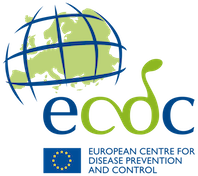ECDC/EACS standards of HIV care
What are standards of care for HIV?
The standards of care (SoC) for HIV define the expected, or desired, quality of prevention, treatment, and care for people at risk of HIV acquisition or living with HIV.
The standards are based on a scientific rationale, as well as the responsibilities of each stakeholder and ensure that people receive appropriate, high-quality prevention and care that aligns with the most up-to-date medical knowledge and ethical standards.
The European Centre for Disease Prevention and Control (ECDC) in partnership with the European AIDS Clinical Society (EACS) have developed standards of care in the areas of HIV testing and pre-exposure prophylaxis (PrEP). Additional standards in the following areas are in development and expected to be published in October 2025: antenatal screening; commencement of antiretroviral therapy (ART); and HIV and co-morbidities.
Each standard is based on the following structure:
- a brief description of the rationale for the standard;
- quality statements describing best practice based on current guidelines, evidence, and expert opinion;
- related measurable and auditable outcome indicators used to assess the quality and effectiveness of the services; and
- numeric values for defined targets.
These standards of care are designed for three distinct audiences:
- people at risk of acquiring HIV or people who are living with HIV;
- people responsible for the provision and delivery of HIV-related services (service providers); and
- people who have responsibility for policy, guidance development, and commissioning or funding of HIV services (Commissioners and public health institutes).
All developed standards will strictly adhere to the ‘People First Charter’ promoting person-first HIV and Sexual Health and prevention language allowing for positive and inclusive messages and avoiding perpetuating unhelpful stereotypes.
The SoC provide the minimal and optimal quality of stigma-free prevention and care to be provided to support people living with HIV in European countries. The following principles will underpin all aspects of the SoC:
- All people covered by these standards should be provided with equitable, non-discriminatory and stigma-free care. There should be equity of access to and provision of health and care for all, regardless of age, gender, gender expression, national origin (ancestry), marital status, religion, physical ability, or residence status.
- All people covered by these standards should be at the centre of their own care, with the possibility of meaningful involvement in the delivery of services.
- All people covered by these standards should expect that only data required for surveillance, commissioning, monitoring of care or research will be collected, stored or used in line with General Data Protection Regulation (GDPR) principles, that data confidentiality and integrity is assured, and that data will not be used for any other purposes.
People at risk of HIV acquisition or living with HIV should expect to have equitable access to consistently high-quality prevention, testing, support, and care, irrespective of who they are or where they live in the European region. SoC inform people at risk of HIV acquisition or living with HIV, their caregivers and those who advocate on their behalf about the prevention and care they can expect when they access HIV services.
SoC are an important resource for those with responsibility for the commissioning of services affecting people at risk of or living with HIV. They can be used to measure variation in performance and outcomes in HIV prevention and care services across countries, regions, demographics, and populations in the European region.
By enabling European-wide benchmarking, outcome-based auditing, knowledge-sharing and identification of best practice, the standards will provide an important source of information for policy and commissioning frameworks for HIV prevention and care-related services at regional, national, and local levels.
To provide equitable and non-discriminatory HIV prevention and care that is relevant, appropriate, and accessible for people at risk of or living with HIV, the standards are person-centred in their approach. The SoC highlight the pivotal role of HIV-related stigma negatively impacting on all aspects of care, treatment, and prevention, as well as including specific sections aimed at enhancing well-being and ensuring meaningful user engagement in service design and delivery. They seek to incorporate the appropriate care and services that people at risk of or living with HIV should be able to access to enable physical, psychological, emotional, and social well-being to enhance their quality of life and promote the best possible health outcomes.
Through a collaborative process, jointly led by ECDC and EACS, work was initiated to develop European standards of HIV care. In line with our respective mandates, ECDC has taken the lead in developing the more public health-related standards, while EACS has taken the lead in developing the more clinically-related standards. Similarly, the auditing/monitoring of the public health-related standards will rest more with ECDC while the auditing/monitoring of the clinically-related standards will rest more with EACS. Nevertheless, the development and auditing/monitoring of the standards have been determined to be most impactful if done jointly.
Informed by a pilot project conducted on standards of HIV care for Europe, in addition to discussions at the EACS Standard of Care for HIV and Co-infection meeting in October 2022 in Brussels, Belgium, ECDC and EACS convened an advisory group to guide the development of European standards of HIV care. The advisory group included members from three key stakeholder groups: clinicians, public health experts, and community representatives from across Europe. EACS proposed clinician members, while the European AIDS Treatment Group (EATG) nominated community representatives. ECDC invited expert representatives from these two stakeholder groups, along with public health experts identified by ECDC, to join the advisory group.
Read the Standards of Care
Methodological approach for the creation of the standards of care
The following steps are pertinent and were taken in developing the standard of care modules:
An advisory group (AG) was established with representatives comprising clinicians, public health experts and community (Annex 1). The role of the advisory group was to provide overarching advice and guidance throughout the development of the SoCs, support the prioritisation of module selection, quality statements and indicators and review the final SoC module.
Specific writing groups (consisting of AG members and invited topic-specific experts) were established for each module. Their role was to develop the quality statements, indicators, and targets (under the guidance of an expert lead writer) and review the final SoC module. The advisory group and the writing groups completed the required ECDC Declaration of Interest (DOIs) to ascertain potential conflicts of interest.
A comprehensive review of recommendations from European and international guidelines, such as ECDC/EACS/WHO, was conducted, as well as the focus areas outlined in the Dublin Declaration. Review of chosen national guidelines was done to ensure that all key subject areas were covered as well as to ensure identification of potential areas of conflict. The aim of the evidence-based approach was to identify recommendations that are proven to improve outcomes if implemented; related to key areas of importance within the European region and associated with recognised areas of underperformance in the European region.
Based on the review and identification of relevant topics which were impactful, and aligned with current best practices and regional priorities, the topic-specific writing groups initiated the topic selection while taking into consideration factors such as clinical importance, performance variation, data availability and stakeholder relevance. The aim of the work was to identify key recommendations to be addressed by quality statements including outcome measures in the SoC and group them in relevant areas to be addressed. Topic writing group members proposed additional subject areas and parameters for consideration and any difference of opinion was documented ensuring that all key concerns were acknowledge and addressed.
Quality statements were created based on the identified topics and prioritised recommendations and where feasible, indicators were developed for each quality statement. As measures can be divided into structural, process and outcomes, performance targets and indicators were aligned with these different categories. Each indicator specifies its intended audience to clarify responsibility for its delivery and to maximise its impact. Where relevant, the indicators were aligned with existing monitoring and evaluation frameworks to streamline data collection with current processes across Europe. This alignment helps reduce the data burden on countries and services.
The prioritisation of the quality statements and indicators was done, by the writing group, considering factors such as clinical importance, performance variation, data availability and stakeholder relevance. The prioritisation will allow countries to first address the most critical indicators, before progressively working towards others as capacity and data availability improve.
Quality statements, indicators and prioritisation results were presented to the writing group for review and refinement during designated meetings. Writing group and Advisory group members evaluated the prioritisation and either validated the proposed selections or suggested alternatives. This was done considering challenges in service delivery and care provision across countries, the feasibility and validity of data collection, the non-discriminatory nature of services, evidence of impact, and areas of underperformance within specific topic areas across the European region.
The development of targets for the prioritised indicators was guided by several established methodologies. Indicators were classified by the writing group into three categories: structural, process, and outcome indicators. Outcome indicators were further divided to include ‘intermediate outcome indicators’, which are designed to make measurement and reporting more feasible and timelier. Ideally, targets should be both achievable and aspirational, building on existing performance levels. The targets were largely informed by international guidelines.
The writing group agreed that for some indicators, different approaches could be used to determine a service or country’s target, depending on their current performance level, whether known or assumed. However, national-level structural standards were assigned a target of 100%, as these indicators were deemed universally desirable and achievable.
For local structural indicators, a target range of 90-95% was set for specialist services, and 80-85% for non-specialist services. For process indicators, the ‘ideal performance’ target was set at 90–95% for purely service-based indicators (i.e. those entirely dependent on the service delivering them), and 80–85% for process indicators influenced, at least in part, by patient behaviours (e.g. attending an appointment to receive a specific service). To ensure that targets are useful and applicable across all regions and services – especially those currently underperforming or with unknown performance levels – it was proposed that alternative methods could be adopted. For example, an annual percentage improvement from baseline (e.g. 2% per year) or setting targets at the 7th percentile of current performance levels could be used to provide more flexibility.
The quality statements and indicators were presented to the advisory group. Revisions were made based on the discussion, revision, and final consensus approval.
Prioritisation of indicators
Several indicators have been initially selected for prioritisation in order to maximise acceptability and feasibility of adoption and reporting against the standards – these are highlighted in bold in the tables in each of the modules. The overall prioritisation of indicators will guide countries and services on which indicators to focus on initially. Once achieved, or progress towards the target is established, countries and services are encouraged to move on to other indicators until all are being addressed.
Targets have been developed for the different indicators. These are intended to be a self-applied mechanism for countries and HIV care services to measure their performance against the standards, assess the impact of any interventions and record progress over time.
Indicators are specific and measurable aspects of healthcare to assess the quality of care delivered. They are derived from standards developed from evidence-based guidelines or expert consensus when evidence is unavailable. Ideally all patients should receive the highest quality of care at all times, i.e. 100% of guideline recommendations. However, many barriers exist to the delivery of this level of care, many outside the control of the individual healthcare service. Setting targets for indicators allows monitoring of progress towards an acceptable level. The targets should be feasible but also challenge the service to improve the care delivered and should be developed with input from all stakeholders. Therefore, the target should be based on an agreed acceptable level of performance that can be achieved incrementally over a specified timeframe. These SoC therefore describe the desirable level of performance along with a number of methodologies to allow services to identify interim targets to drive improvement, as determined by expert opinion.
Measures can be divided into structural, process and outcomes, and performance targets are aligned to these different categories. Thus, structural indicators, e.g. inclusion of a specific recommendation in National HIV testing guidelines is a binary, achievable outcome and should have a target of 100%. Process indicators are divided into those primarily under the control of the service (e.g. a patient having a specific investigation when attending for a specific type of appointment) and those where patient choice/behaviour or other external factors play a part (e.g. a patient needs to attend the service in order to receive a certain aspect of care within the defined time frame). Therefore, consensus among the advisory group was to allocate the ideal level of performance as 95% for the former and 85% for the latter. Services who are significantly underperforming can identify interim targets (annual improvement from baseline, upper IQR of a number of similar services’ performance).
Outcome indicators tend to be more complex, occurring over an extended time period and therefore while the ideal target is described it is often useful to also have interim outcome indicators. The targets for these reflect similar division as for the process measures, though the influences often include broader societal, legislative and political factors.
In summary, while the Standards, and hence the indicators, are formed from evidence-based guidelines, the indicator targets have been agreed via expert opinion, also drawing on existing data where available. Indicators need to be pragmatic, with achievable targets that allow for healthcare system variation, case mix, resources, social context and patient choice in order to facilitate improvement in care delivery towards the optimal quality of care.
In developing the standards of care, including the quality statements and indicators, a combination of consensus-building techniques, such as the RAND/UCLA Appropriateness method and the Delphi method, were used. The RAND method is a formal consensus technique that combines scientific evidence with expert opinions to create guidelines, recommendations, and quality indicators, particularly in healthcare settings – this method was used to identify topics for the SoCs and for developing quality statements and indicators. The Delphi method is a structured communication process that gathers expert opinions and facilitates consensus through multiple rounds of questions and feedback – this method was used as part of the writing group meetings.
These methods facilitate expert opinions being informed by, and based on, evidence drawn from both international and national guidelines and such an approach is crucial as the standards developed will serve to establish baseline performance, enable benchmarking, and provide measures for improving the quality of care and service delivery




